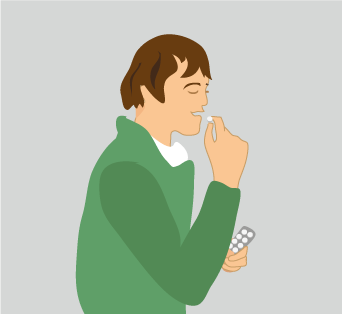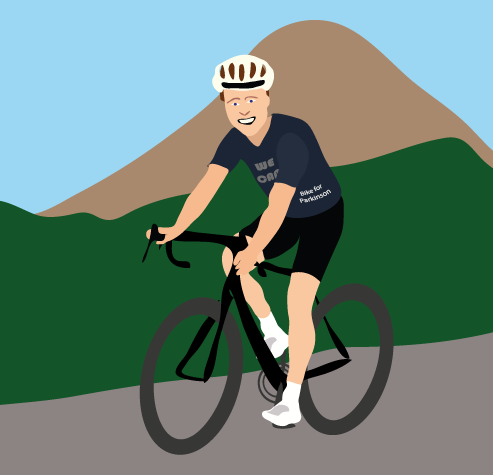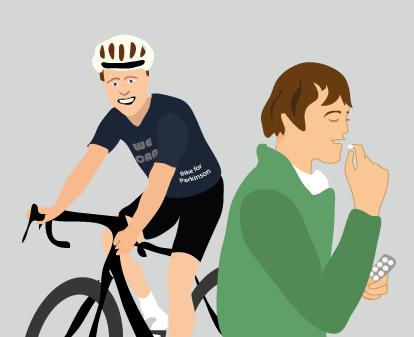This post is also available in Dutch.
The medication given to treat Parkinson’s helps, but doesn’t heal. There’s still a way to go in finding a cure. Nevertheless, patients can use treatments to reduce their symptoms.
![]()
Parkinson’s patient and Dying Dopamine Neurons. Image by Annelies (CC BY-NC-ND 4.0).
In short, what is Parkinson’s
When having Parkinson’s disease, problems with walking arise because the dopamine-producing cells in the brain are no longer functioning properly. This occurs because there is an overabundance of irregular or misfolded proteins being produced (to learn more, read a previous blog).
When patients begin to notice they have symptoms of Parkinson’s, by this point, usually 70% of all dopamine-producing cells have already died. Unlike the rest of the body that can the loss of cells can typically still be replaced, the brain cannot replace cells that have died. The brain cells you acquire right after being born, are all the brain cells you will ever have (with a few exceptions). Your brain cannot grow any new neurons. This makes Parkinson’s especially difficult to treat, because your brain cannot regrow the cells that have been lost.
Parkinson’s is incurable (for now)
In order to cure Parkinson’s, you would need to: 1) remove all (if not most) misfolded proteins including those within cells; 2) ensure that the production of all misfolded proteins stops; and 3) reverse the number of neurons lost. Unfortunately, none of these three methods can be carried out with a 100% success rate.
Nevertheless, scientists are working hard. Currently, they are testing whether the immune system might be used as an extra measure to clean and rid cells of these flawed proteins, by stopping the part of DNA that causes the wrong folds, and further using stem cells to grow new neurons. Still, not one of these methods is 100% safe and effective. There is still a lot more to do.

Image by Annelies (CC BY-NC-ND 4.0).
Still treatable
Even though curing the disease is still out of reach, doctors can relieve symptoms of Parkinson’s. Take for instance the medication levodopa or other so-called agonists, which are taken to compensate levels of dopamine when there is a shortage.
Levodopa is a nutrient that after a small change can be converted into dopamine. This small conversion results in lightening the workload of many healthy dopamine-producing brain cells. When a lot of levodopa is present, neurons become stimulated and increase their own production of dopamine.
Another option is taking agonists (imitators). These are substances that mimic dopamine. The disadvantage of using agonists is that they mimic dopamine throughout the entire brain, their effect is therefore less precise than levodopa. In fact, there is another area of the brain that deploys dopamine, the ventral striatum, which is very important for reward and motivation. Some Parkinson’s patients that receive too high a dose of agonists develop an addiction because of the medication that acts on this region of the brain.

Bike for Parkinson – Image by Annelies (CC BY-NC-ND 4.0).
Taking matters into your own hands
Aside from swallowing a pill, there are a lot of other things that patients themselves can do to relieve their symptoms of Parkinson’s. More and more studies are reporting that exercising is very important for neural health. Parkinson’s patients can especially gain from this kind of stimulation. So don’t be surprised that many Parkinson’s patients become very active!
Even a physical therapist can help tremendously with Parkinson’s, for instance by providing tips for exercises, movements, and improving posture. Even making smarter decisions about food can help. Avoiding food with a lot of proteins can improve the uptake of dopamine medication, and even planning meals properly can help medicine work more effectively.
In short, the mystery of Parkinson’s will not be resolved for a long time, but there are many methods for treatment. Moreover, scientists and researchers are working hard to further improve them. If you want to find out more about the research going on, read the following post!
This blog was written by Annelies. Edited by Mahur.
